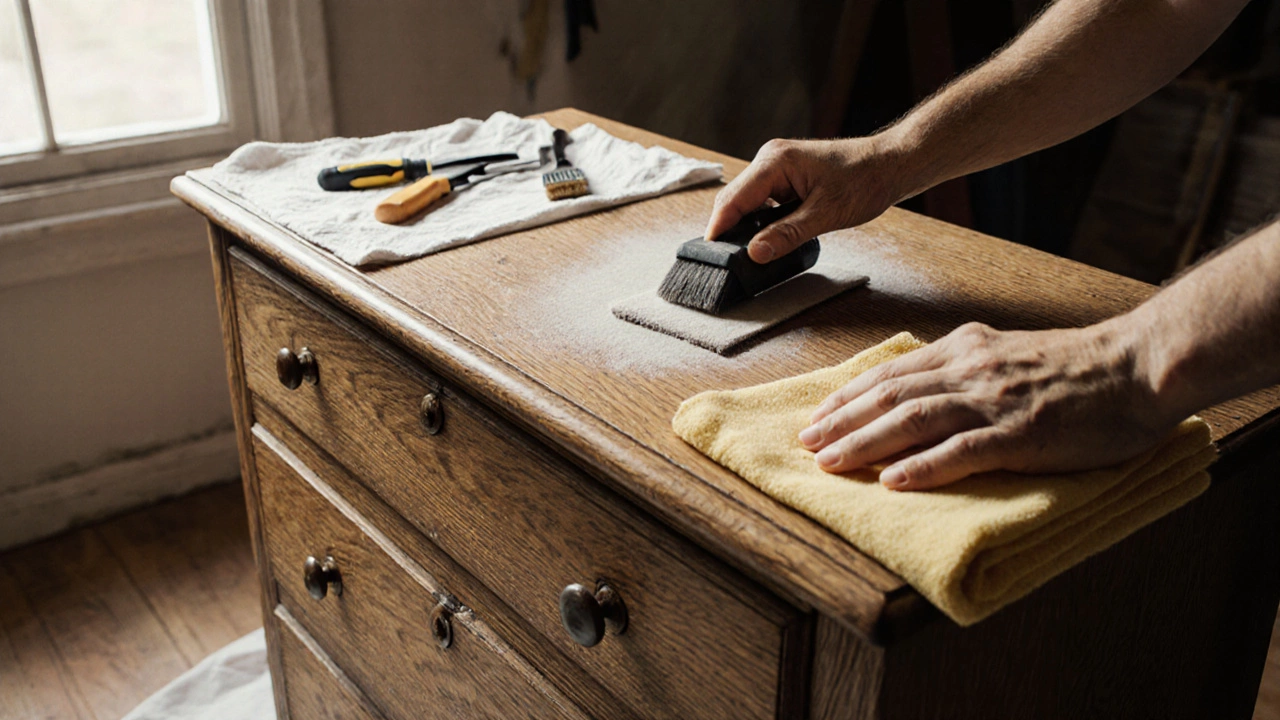When you want to refinish wood with vinyl, you’re not just covering up damage—you’re giving old furniture new life without the dust, mess, or cost of stripping and repainting. This method uses thin, adhesive-backed vinyl films that stick directly to wood surfaces, hiding scratches, stains, and outdated finishes. It’s not a temporary fix. People in the UK have been using this technique for years to update kitchen cabinets, dressers, and even vintage tables, especially when they’re working with solid wood that’s still sturdy but looks worn out. Also known as wood veneer alternative, a peel-and-stick surface layer that mimics wood grain or solid color without real wood, vinyl wraps are now more durable, heat-resistant, and waterproof than ever before.
Unlike paint, which needs primer, sanding, and multiple coats, vinyl wrap works on most clean, smooth wood surfaces—even if they’ve been previously finished. You don’t need to remove the old finish unless it’s peeling badly. Just clean it with rubbing alcohol, let it dry, and apply. The result? A seamless, factory-like finish that lasts years. Many users pair this with furniture makeover, a low-effort, high-impact renovation that transforms outdated pieces into modern statement items techniques like replacing handles or adding decorative edges. This isn’t just for renters, either. Homeowners in older cottages and cabins across the UK use vinyl wraps to preserve original wood while matching today’s neutral or bold interior trends. It’s a smart choice if you’re avoiding VOCs from paint or want to keep your project weekend-friendly.
What makes this method stand out is how it connects to other practical home fixes you’ve probably seen here. Like how to protect furniture from mold in storage, using humidity control and proper cleaning to prevent damage, refinishing with vinyl helps seal the wood surface, making it less prone to moisture damage over time. It also ties into the idea of extending furniture lifespan—something we’ve covered in posts about couch lifespan, how long sofas last and how to care for them. If your coffee table’s top is scratched but the frame is solid, why replace it? Vinyl lets you keep the structure you love and just change the look. You can even mix textures: matte black on a pine dresser, or wood grain on a metal-framed side table. The options are simple but powerful.
You’ll find real examples of this in the posts below. Some show how people transformed thrifted wardrobes into modern storage units using vinyl. Others walk through fixing dining chairs that looked beyond repair. There are even guides on choosing the right vinyl—what thickness works for curved edges, how to avoid bubbles, and which brands hold up best under sunlight. No fancy tools needed. Just a squeegee, a sharp blade, and a little patience. Whether you’re trying to save money, reduce waste, or just give your space a quick refresh, refinish wood with vinyl is one of the most underrated tricks in home improvement. And you don’t have to be a pro to get it right.

Learn how to successfully apply vinyl wrap over wood furniture for a modern, affordable refresh. Discover prep steps, material choices, and long-term care tips to avoid peeling and bubbles.
More